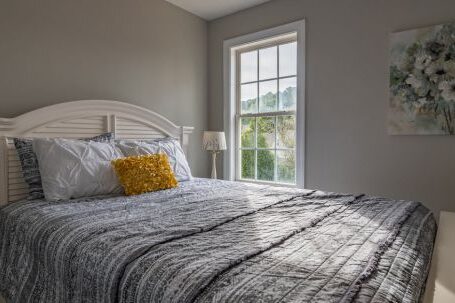Cities around the world are experiencing rapid growth and development, resulting in numerous challenges related to energy consumption, waste management, and the overall well-being of their inhabitants. As a response to these challenges, the concept of sustainable urban design has been gaining momentum in recent years. This approach aims to create cities that are environmentally friendly, socially inclusive, and economically viable. By integrating various strategies and technologies, sustainable urban design seeks to address the pressing issues of urbanization and promote a more sustainable future for our cities.
Creating Livable Spaces
One of the key goals of sustainable urban design is to create livable spaces for residents. This involves designing cities in a way that promotes walkability, accessibility, and a sense of community. By prioritizing pedestrians and cyclists, rather than cars, sustainable urban design encourages active transportation, reduces traffic congestion, and improves air quality. Additionally, green spaces and parks are incorporated into urban areas to provide residents with places to relax, exercise, and connect with nature.
Efficient Resource Management
Sustainable urban design also focuses on efficient resource management. This includes adopting renewable energy sources, such as solar and wind power, to reduce reliance on fossil fuels. Buildings are designed to be energy-efficient, with features such as insulation, natural lighting, and efficient heating and cooling systems. Furthermore, water management strategies, such as rainwater harvesting and greywater recycling, are implemented to reduce water consumption and minimize waste.
Waste Reduction and Recycling
Another important aspect of sustainable urban design is waste reduction and recycling. Cities generate vast amounts of waste every day, and managing this waste is crucial for maintaining a clean and healthy environment. Sustainable urban design incorporates waste management systems that prioritize recycling, composting, and waste-to-energy processes. By diverting waste from landfills and promoting recycling, cities can significantly reduce their environmental footprint.
Social Inclusivity
Sustainable urban design goes beyond just the physical aspects of a city; it also considers the social well-being of its residents. Inclusive design principles are incorporated to ensure that cities are accessible to people of all ages, abilities, and socioeconomic backgrounds. This involves designing public spaces, transportation systems, and buildings that are universally accessible and accommodating. By prioritizing social inclusivity, sustainable urban design aims to create cities that are equitable and provide equal opportunities for all.
Collaborative Planning and Design
A key element of sustainable urban design is the collaboration between various stakeholders, including city planners, architects, and community members. This participatory approach ensures that the needs and aspirations of the community are taken into account during the planning and design process. By involving residents in decision-making, cities can create spaces that truly reflect the desires and values of their inhabitants.
A Sustainable Future
The rise of sustainable urban design signifies a shift towards a more sustainable and resilient future for our cities. By focusing on creating livable spaces, efficient resource management, waste reduction, social inclusivity, and collaborative planning, cities can become more sustainable and improve the quality of life for their residents. As urbanization continues to accelerate, it is essential that we embrace sustainable urban design principles to create cities that are not only environmentally friendly but also socially and economically prosperous. By working together, we can shape the future of our cities and build a better world for generations to come.
In conclusion, sustainable urban design is a powerful tool for addressing the challenges of urbanization and creating cities that are environmentally friendly, socially inclusive, and economically viable. By incorporating strategies and technologies that prioritize livability, efficient resource management, waste reduction, and social inclusivity, cities can pave the way towards a more sustainable future. By embracing sustainable urban design principles, we can build cities that are not only beautiful and functional but also resilient and sustainable. The rise of sustainable urban design is a testament to our commitment to creating a better world for ourselves and future generations.





